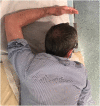Partial tear of the distal biceps tendon: Current concepts
- PMID: 35591898
- PMCID: PMC9111923
- DOI: 10.1016/j.jor.2022.05.002
Partial tear of the distal biceps tendon: Current concepts
Abstract
Background: Patients with partial rupture of the distal biceps tendon can present with vague elbow pain and weakness. Understanding of the anatomy and aetiology of this disease is essential to management. Patients can present with a single or multiple traumatic events or with a chronic degenerative history. On clinical examination, patients will have an intact tendon making the diagnosis more challenging. Clinicians, therefore, should have a high index of suspicion and should actively look for this pathology.
Objectives and rationale: This review aims to discuss the current evidence in managing partial rupture of the distal biceps tendon with a suggested treatment algorithm.
Conclusion: Several clinical tests have been described in the literature including resisted hook test, biceps provocation test, and TILT sign. However, the diagnosis is usually confirmed by a magnetic resonance scan with the arm positioned in elbow flexion, shoulder abduction, and forearm supination and commonly known as FABS MR. Partial tendon tears that involve less than 50% of the tendon can be successfully managed conservatively. Tears that include more than 50% of the tendon are more likely to fail conservative management and would benefit from surgical intervention. It is crucial, however, to involve the patient in the decision making, which is based on their objectives and needs.
Keywords: Anatomy; Diagnosis; Distal biceps tendon; Management; Partial tear.
© 2022 Professor P K Surendran Memorial Education Foundation. Published by Elsevier B.V. All rights reserved.
Conflict of interest statement
None.
Figures





Similar articles
-
Evaluation of clinical tests for partial distal biceps tendon ruptures and tendinitis.J Shoulder Elbow Surg. 2022 Mar;31(3):532-536. doi: 10.1016/j.jse.2021.10.012. Epub 2021 Nov 10. J Shoulder Elbow Surg. 2022. PMID: 34774776
-
The utility of the biceps palpation-rotation test in diagnosing partial distal biceps tendon tears.J Shoulder Elbow Surg. 2022 Aug;31(8):1603-1609. doi: 10.1016/j.jse.2022.02.012. Epub 2022 Mar 22. J Shoulder Elbow Surg. 2022. PMID: 35331856
-
A novel clinical test for partial tears of the distal biceps brachii tendon: The TILT sign.Clin Anat. 2018 Mar;31(2):301-303. doi: 10.1002/ca.23038. Epub 2018 Jan 9. Clin Anat. 2018. PMID: 29266488
-
Treatment of partial distal biceps tendon tears.Sports Med Arthrosc Rev. 2008 Sep;16(3):154-61. doi: 10.1097/JSA.0b013e318183eb60. Sports Med Arthrosc Rev. 2008. PMID: 18703975 Review.
-
Distal biceps ruptures: open and endoscopic techniques.Curr Rev Musculoskelet Med. 2016 Jun;9(2):215-23. doi: 10.1007/s12178-016-9330-2. Curr Rev Musculoskelet Med. 2016. PMID: 27021282 Free PMC article. Review.
Cited by
-
Surgical repair of an atypical midsubstance distal biceps tendon partial tear: a case report.JSES Rev Rep Tech. 2025 Feb 11;5(2):344-346. doi: 10.1016/j.xrrt.2025.01.005. eCollection 2025 May. JSES Rev Rep Tech. 2025. PMID: 40321848 Free PMC article. No abstract available.
-
Evaluating the Ability of Hand Surgeons to Reliably Classify the Percentage of Tearing Based on MRI for Patients With a Partial Distal Biceps Tendon Tear.Hand (N Y). 2025 Jul 14:15589447251352005. doi: 10.1177/15589447251352005. Online ahead of print. Hand (N Y). 2025. PMID: 40654308 Free PMC article.
-
Decreased Strength, Complication Rate and Higher Satisfaction in Conservative Treatment of Partial Distal Biceps Tendon Rupture Compared to Surgical Treatment: A Systematic Review.Orthop Rev (Pavia). 2024 Jul 12;16:116367. doi: 10.52965/001c.116367. eCollection 2024. Orthop Rev (Pavia). 2024. PMID: 39006104 Free PMC article.
-
Exploring current understanding and philosophies of orthopaedic surgery in the sports person.J Orthop. 2022 Jul 14;36:137-138. doi: 10.1016/j.jor.2022.07.010. eCollection 2023 Feb. J Orthop. 2022. PMID: 36874390 Free PMC article. No abstract available.
References
-
- Eames M.H.A., Bain G.I. Distal biceps tendon endoscopy and anterior elbow arthroscopy portal. Tech Shoulder Elbow Surg. 2006;7(3):139–142. doi: 10.1097/00132589-200609000-00004. - DOI
LinkOut - more resources
Full Text Sources

